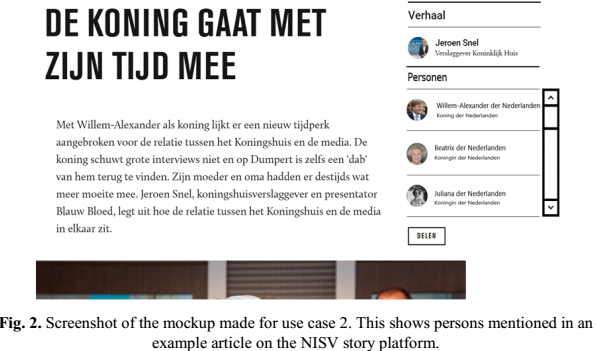[This post describes the Master Project work of Information Science students Tim de Bruyn and John Brooks and is based on their theses]
Audiovisual archives adopt structured vocabularies for their metadata management. With Semantic Web and Linked Data now becoming more and more stable and commonplace technologies, organizations are looking now at linking these vocabularies to external sources, for example those of Wikidata, DBPedia or GeoNames.
However, the benefits of such endeavors to the organizations are generally underexplored. For their master project research, done in the form of an internship at the Netherlands Institute for Sound and Vision (NISV), Tim de Bruyn and John Brooks conducted a case study into the benefits of linking the “Common Thesaurus for Audiovisual Archives” (or GTAA) and the general-purpose dataset Wikidata. In their approach, they identified various use cases for user groups that are both internal (Tim) as well as external (John) to the organization. Not only were use cases identified and matched to a partial alignment of GTAA and Wikidata, but several proof of concept prototypes that address these use cases were developed.

For the internal users, three cases were elaborated, including a calendar service where personnel receive notifications when an author of a work has passed away 70 years ago, thereby changing copyright status of the work. This information is retrieved from the Wikidata page of the author, aligned with the GTAA entry (see fig 1 above).
A second internal case involves the new ‘story platform’ of NISV. Here Tim implemented a prototype enduser application to find stories related to the one currently shown to the user, based on persons occuring in that story (fig 2).

The external cases centered around the users of the CLARIAH Media Suite. For this extension, several humanities researchers were interviewed to identify worthwile extensions with Wikidata information. Based on the outcomes of these interviews, John Brooks developed the Wikidata retrieval service (fig 3).
The research presented in the two theses are a good example of User-Centric Data Science, where affordances provided by data linkages are aligned with various user needs. The various tools were evaluated with end users to ensure they match their actual needs. The research was reported in a research paper which will be presented at the MTSR2018 conference: (Victor de Boer, Tim de Bruyn, John Brooks, Jesse de Vos. The Benefits of Linking Metadata for Internal and External users of an Audiovisual Archive. To appear in Proceedings of MTSR 2018 [Draft PDF])
Find out more:
- John Brook’s thesis
- Tim de Bruyn’s thesis
- Draft version of the MTSR paper
See my slides for the MTSR presentation below
